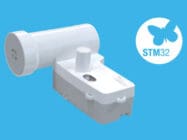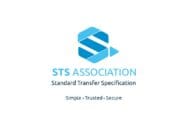
A Strata Grid Distributed Energy Resource Management System (DERMS) will be implemented at NREL’s Energy Systems Integration Facility (ESIF) in the hopes of “developing a powerful toolbox” for existing and future use cases.
US Department of Energy’s National Renewable Energy Laboratory (NREL) chose DERMS provider Smarter Grid Solutions (SGS) to implement their Strata Grid DERMS at the facility.
ESIF is an energy systems integration laboratory facility focused on developing and deploying clean energy technologies and resilient distribution systems.
According to the ESIF’s research project manager, Sarah Williams, “DERMS-related research is core to the integrated, multi-disciplinary work happening at ESIF.
“We have confidence we are developing a powerful toolbox with SGS to address both existing and future use cases.”
DERMS are known for enabling enhanced control and visibility over assets for utilities and electric cooperatives, allowing operators to manage incoming renewable energy resources and grid-edge devices for improved performance of the electrical system.
According to SGS in a press release announcing their selection, example use cases of the Strata Grid DERMS include the autonomous operation and coordination of modern grid devices.
Within the system distributed energy resources (DERs) are leveraged for improved grid planning and operation, as well as demand-side management and customer engagement through bidirectional communication with utilities and energy market operations.
Have you read:
PG&E taps Schneider and Microsoft for new DERMS
Energy Queensland deploys smart DERMS for load control
According to SGS, the system is the “only DERMS software to combine the grid and market optimisation with real-time control”.
According to the ESIF, when it comes to their integrated energy capabilities, the lab includes tools and approaches to enable better integration with the electric grid and other energy infrastructure, diversification of integrated energy streams for resilience, cybersecurity risk management and customer participation in smart load management and energy generation.
The ESIF also states it has “hundreds of commercially available” DERs, including inverters, electric vehicles, batteries, home energy systems, solar panels, fuel cells and more, which can be integrated ‘in-the-loop’ with simulations for realistic experimentation.
According to SGS’ statement, NREL sought a DERMS capable of replicating utility control and the monitoring of distributed devices from small residential systems to the grid substation level.
“SGS is excited to partner with NREL on their research in the DERMS realm. With NREL’s research leadership and SGS’ industry-leading DERMS solutions, we expect to see very interesting and exciting learnings from this partnership,” said Jon Grooters, director of utility solutions at SGS.








